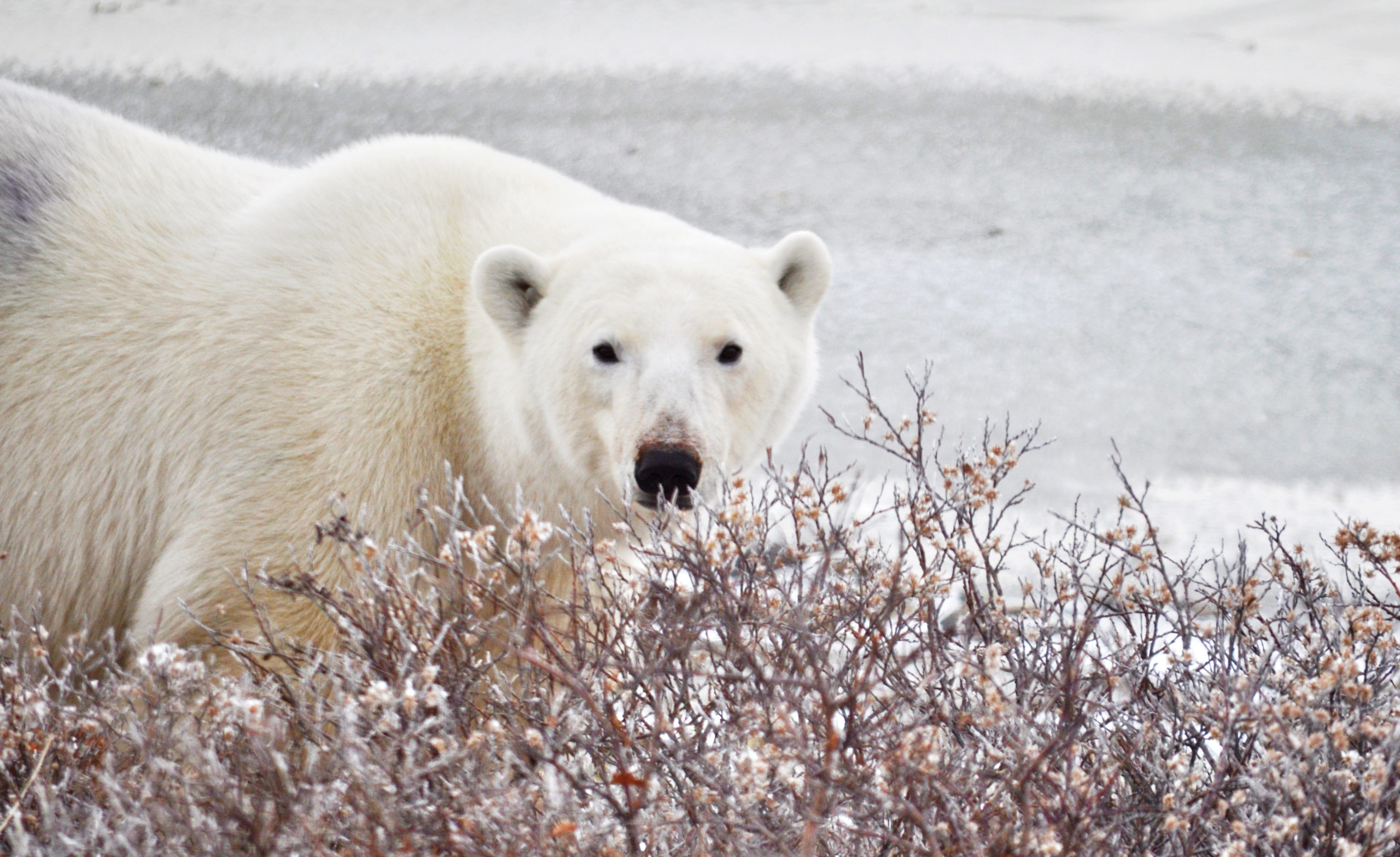Looking for a unique travel encounter? Canada’s central province of Manitoba is home to some of the most majestic, beautiful, and quintessentially Canadian wildlife.
From the royals of the Arctic – polar bears and beluga whales – to bison, moose, and bird migrations, Manitoba’s diverse landscape offers a mind-blowing range of wildlife viewing opportunities that simply can’t be replicated anywhere else on Earth. Read on to discover where, when, and how you can encounter some fantastical birds and beasts in the wild.
Polar Bear: Best Viewing Time July to November
Should you ever come face to face with these Arctic royals, you may wish to curtsy – and then back away quickly. In Churchill, you can safely view the largest land carnivore in the world from a tundra vehicle or from a fenced wilderness lodge during autumn. You can even walk among them with a guide or see them from on high during a helicopter tour. During summer, you can view them along the rocky coastlines while you’re out on the water for a beluga experience.
Bison: Year-Round
Perhaps Manitoba’s most iconic resident celebrity, the bison reflects the province’s First Nations’ heritage, still as relevant today as it ever was. These majestic beasts are the largest mammal in North America and can run up to 60 kilometers an hour. Riding Mountain National Park and FortWhyte Alive are ideal locations for a personal encounter with these famous giants.

Belugas: July – August
Hearing the beluga whales sing their sweet ‘canary’ chirps and whistles is a spine-tingling moment. Thousands of white beluga whales congregate each summer in the mouths of the northern Churchill and Seal Rivers that empty into Hudson Bay. Jump in a Zodiac for a closer look. Better still? Kayak with the belugas! They’re among the friendliest of whales and are just as curious about people as you are about them.
Cloud Wolves of Kaska Coast: November
Answer the call of the wild wolves with Churchill Wild and discover the thrill of tracking, watching, photographing, and studying these enigmatic creatures. This nine-day cloud wolves expedition, based at Nanuk Polar Lodge on the Kaska Coast of southern Hudson Bay, includes daily excursions in search of wolves and wolf activity, polar bears, moose, and other boreal wildlife, tundra inspired cuisine, and photography tips from acclaimed photographer, Jad Davenport, on assignment for National Geographic Creative.
Arctic Fox & Hare – Year-round
There is something infinitely fascinating about snow-white foxes and bunnies frolicking in the chill, blending in with their surroundings, like cotton balls dancing on ice. Despite their small size, Manitoba’s cutest creatures are widely sought after for their photogenic qualities. They’re found year-round in Churchill, but their coats only turn white when the snow begins to fall.

Bald Eagle: May to September
Here’s a tip for bird-loving travelers on the lookout for the regal bald eagle: stay close to the water. The famous white-feathered heads of the bald eagle are most commonly spotted swooping near the rivers and lakes in search of fish. Try Whiteshell Provincial Park, Riding Mountain National Park or Pembina Valley Provincial Park.
Sunset Bird Migrations: September to October
Visit Fort Whyte Alive and Oak Hammock Marsh in September and October and witness the autumn bird migration 30 minutes after sunset when thousands of geese descend for a night’s rest on the lakes and ponds of these nature reserves. Stay for dinner at Fort Whyte Alive.
Narcisse Snake Dens – March to May
Every spring, thousands of curious people head to Manitoba’s limestone Narcisse Snake Dens to witness tens of thousands of red-sided garter snakes emerge from their winter dens – the biggest gathering of its kind in the world. Watch for the spectacle to begin as the male snakes wait patiently for the larger females to surface. Once she appears, up to a hundred male snakes slither all over her, forming a ‘mating ball’ in an attempt to ‘woo’ the female. Reptile lovers can feel free to handle the snakes but be warned, they are feisty! They may give you a nip, but they’re not dangerous. However, they do leave behind an unpleasant scent, so you may want to wash your hands
For more Destination inspiration click here
Want to Stay Up to Date? Follow us on Facebook or Instagram or Sign Up for our Bi-Weekly Newsletter.

